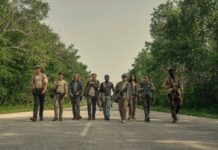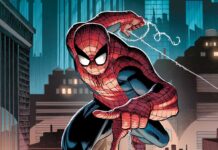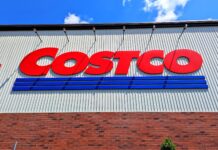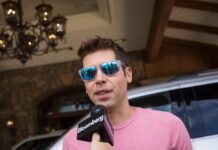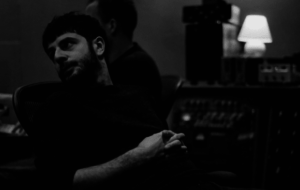
'We're different from other studios': The rise and rise of Snap! Studios
Snap! Studios manager Marco Pasquariello on how the facility has been able to duke it out with the sector’s big guns while holding on to its independent ethos…
Few could have predicted the prosperous state North London’s Snap! Studios finds itself in today when it launched back in 2010. The global economy was on its knees in the aftermath of the recession and the bedroom producer boom was leaving traditional recording studios in its wake. Long-established facilities were making cutbacks across the board just to make ends meet, with many forced to either scale down or close for business. In short, 2010 was not the time to open a new, independent recording studio.
Or at least that should have been the case. For Snap! Studios manager Marco Pasquariello the time seemed perfect to launch a high-end facility, which could fill a deeply felt gap in the market. In his eyes, the combination of vintage gear and an “old school” attitude would be enough to ensure Snap! would not only be able to survive the harsh post-recession conditions, but would also find room to grow into a thriving viable business for the future. Eight years on, he appears to have been proved right.
Here, PSNEurope editor Daniel Gumble speaks with Pasquariello to find out how Snap! has grown into one of the capital’s most sought after studio spaces…
Snap opened at a time when most studios were either consolidating or closing. Why did you decide that 2010 was the right time to open a new studio?
When we decided to set up Snap! we felt that there was a lack of studios around that offered what we had in mind; a place with the best classic gear, a good creative vibe and old school values at a price that was accessible and affordable. Mark (Thompson, CEO of audio stockist Funky Junk) already had a great collection of some of the best vintage gear and we wanted to give it a home in a space that was accessible and within people’s (rapidly shrinking) budgets. A client that Funky Junk had worked with for years was coming to the end of his lease on the studio that he had in Manor House, so we went to see the space and it ticked all the boxes. It was on a quiet road with off-street parking and ground level access and was in an (at the time) largely undeveloped and affordable part of town, which felt like it had a bit of a creative community – something of a rarity these days in London. We ambitiously set out to build a studio with a relatively small budget – which admittedly kept being stretched – but we wanted to demonstrate that it’s possible to build a facility like ours without spending a fortune if you have the right planning and team in place.
We were lucky to have access to some of the best contacts in the business, alongside the expertise and facilities from the team at Funky Junk. As the build of the studio evolved, it went from the idea of being the ultimate budget-built studio, to being a serious facility which could compete with the best studios of its size in the UK. Snap! proves that a small, independent venture can succeed by virtue of the skills of those involved and their belief and passion, rather than money and marketing muscle, and that’s something we’re really proud of.
What were the biggest challenges you faced during those establishing years, and how did you overcome them?
During our first few years we were just finding our feet. Working out how people liked using the place, working out how it worked for us as engineers and as musicians, and adapting in accordance. When we first opened up, lots of people were interested in using the place but were maybe scared to take a risk on using a studio they weren’t familiar with, and we understood that. Reputation is everything in this industry, and we had to earn that to gain people’s trust. The only way we that could do that was to work as hard as possible to make sure that people had great experiences when they worked with us – we knew that the gear and the room would speak for itself.
What have been the biggest changes you’ve had to contend with over the past eight years?
I’m not sure that the studio sector has changed that much, other than more of them being around now, which is definitely a great thing. We haven’t needed to change much other than keeping up with the digital side of things. When Pro Tools switched from TDM to HDX that was an expensive upgrade for us. The digital side has changed quite a bit, with most software manufacturers operating subscription-only products. Clients expect studios to have all of these products as standard since it’s what they use on their own rigs. For smaller studios, these extra costs can all add up. Some of our biggest challenges have been simply keeping up with the rising prices of running a facility like ours while budgets from our clients remain the same. Running a studio involves a lot more than just the recording. There’s maintenance, upgrades, and general upkeep to consider too. Snap! was never intended to be a money-making venture at all, but money always has to be considered. We’ve always wanted to keep the studio affordable, but with the increased competition out there, this can be a challenge.
What sets Snap! apart from other studios?
I feel like we’re different from a lot of other studios as we’re completely independent, and have a small team who have been part of the studio for a long time. I have been here since day one – starting as project manager, and now as head engineer and studio manager, along with Tom (Leach) who has been engineering and assisting with us for four years. We’ve always wanted to provide the best service we can. The gear speaks for itself, but the care and attention that we’ve tried to keep in the place reflects on the vibe we have here. It’s definitely a labour of love, and hopefully it shows.
How do you continue to fend off competition from the ‘bedroom producer’ market?
I’ve never felt like we’ve had to “fend off” competition from that market. We’re always keen to help our clients make the best record they can – that often means being realistic about what they can afford to do in a space like ours. If the budget is tight, then it makes sense to block a few weeks in a studio like Snap! to do all of the things that need a big space and loads of nice gear, and then using smaller and more affordable places for editing and little overdubs. That’s the norm for a lot of records these days. We also get artists and producers that love doing everything in once place, and who like camping out for a month and getting an album done. There’s also been a big revival for more vintage sounding recordings over the past 10 or so years.
Talk us through the gear at the studio?
The studio is centred around an ultra-rare vintage Neve 5316 analogue console from the early ‘70s, which we modified to have moving fader automation. Our 53 series is a really special recording version of the better-known broadcast desks and has 28 inputs, eight aux, 16 groups and 16 monitor returns – all in a compact format. The console is definitely one of the biggest drawing points of the studio. The mic pre/EQ modules are based on the legendary 1081. It has a really smooth and musical EQ, which just sounds fantastic.
We use ATC SCM25 monitors, alongside NS10s and Eastlake JM3Ts, which are all fed by a Grace Designs monitor controller, which is incredibly transparent and also has excellent headphone amps.
We have a gorgeous Bosendorfer 225 grand piano, plus a Fender Rhodes, Wurlitzer, Hammond C3 and some nice vintage synths. Also a few great drum kits like our 80’s Sonorlite and 1971 Ludwig Super Classic.
Our mic collection has all the usual suspects and more, but some of the more desirable ones worth mentioning would be our vintage Neumann/Telefunken U47/U67/U87s, KM56s, AKG C12, Sony C800G, Coles 4038s, RCA 44BXs, and lesser known mics like our pair of BBC Marconi AXBTs, which sound phenomenal.
We’ve also got loads of top outboard, including Urei 1176s, LA2A, EAR 660, Pultec, Lang and Decca EQs, Decca limiters, Roland and Binson Tape Echoes, as well as EMT plates and a unique tile room echo chamber. We run Pro Tools HDX with Prism ADA8 conversion, but also offer analogue recording with our Studer 24/16 track two-inch tape machine.
The whole studio is powered by a sophisticated balanced mains supply, which provides an ultra-low noise floor for all the gear. But gear aside, the main thing about Snap! for us and many of our clients is the environment and vibe.
As an independent studio how have you been able to amass such a high-end set up?
Most of the gear has come from years of careful collecting by Mark Thompson. Mark has owned various studios over the past 30 or so years, and has amassed a beautiful collection of some of the best esoteric gear around – much of which was sourced on the cheap at a time when such gear was deemed to be worth a fraction of what it is now. I’m pretty sure our Roland TR-808 was picked up for £70 in a junk shop years ago, and I know we have a Coles 4038 in a beautiful wooden box which was bought for £20 on Camden Market many moons ago. We’re also incredibly lucky to have the support of the team at Funky Junk to maintain and restore lots of the gear that we own. Our collection is the result of years of knowledge and expertise in the audio market, and knowing how to spot a rare bargain.
Talk us through some of the biggest records that have been made at Snap! this year.
We’ve had some amazing clients, and some incredible records made with us in the past few years. Most recently we’ve had Liam Gallagher, Years & Years, The Kooks, Razorlight and Clean Bandit. Liam’s album was his debut record, and it went straight in at No.1. We were really proud of that one. The great thing for us is that we have artists and producers that keep returning to work here. We’ve made friends and built great relationships with our clients, and it’s really pleasing to see them wanting to return to work at the studio with us.
What are the biggest trends you are seeing in the studio market at the moment?
The biggest trends right now in our world are people wanting very traditional/old school/characterful sounding recordings – which is often why they come to work with us. Lots of people are comfortable mixing in the box these days, and the heavy use of plugins is a norm – there are some amazing ones out there now, but they still rely on good quality recordings in the first place. Conversely, we’ve also seen a big rise in the amount of people wanting to mix entirely analogue. Many of our clients book the studio to mix on the Neve with automation and use all the outboard. It’s almost seen as something that’s quite out of the ordinary these days. They’re always fun sessions when they come in.
What’s next for Snap!?
I’ve always wanted Snap to evolve in response to the needs and feedback of the artists, producers and engineers that we work with. We have always tried to improve wherever we’ve needed to – from adding gear, or reshuffling the outboard or layout of things – but we’ve always strived to stick to our core values. There has already been so many great records that have come out of the studio, and we want that to continue for as long as possible. We will remain committed to offering those who care about their craft the opportunity to enjoy one of the best recording facilities in the UK at a price that hopefully helps them expand their talents to the limit.
Source: mi-pro.co.uk


